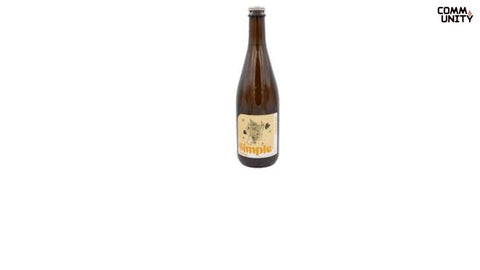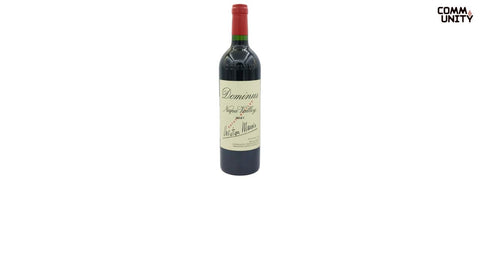Rum is one of the oldest and most widely drunken spirits in the world. It’s enjoyed across cultures and continents.
But, are you wondering what exactly is rum made from? The answer is not as straightforward as you might think, as there are various types of rum produced using different methods and ingredients.
Keep reading to explore the fascinating process of rum production, the raw materials used, and the history behind this rich and flavorful drink.

The Primary Ingredient: Sugarcane
At the heart of rum production lies the basic ingredient, sugarcane, a tropical plant that thrives in warm climates.
Sugarcane is the primary source in the creation of rum, as it provides sugar for fermentation. The process begins by harvesting mature sugarcane stalks, which are then crushed to extract the juice. This juice is then processed to create two key products: molasses and sugarcane juice.
-
Molasses is the byproduct of sugar production. When sugarcane is refined into sugar, the leftover thick, dark syrup is known as molasses.
This ingredient is commonly used in rum production because it has a high concentration of fermentable sugars, which are necessary for fermentation. Rum made out of molasses is generally sweeter and is more commonly produced.
-
Sugarcane Juice, on the other hand, is used in agricole-style rums produced in the French Caribbean, such as in Martinique and Guadeloupe. This method retains more of the plant's natural flavor and is a departure from the molasses-based rum. Therefore, rum made out of sugarcane juice has more of a grassy flavor.
Sugarcane to Rum: The Fermentation Process
Once the sugarcane juice or molasses (both main rum ingredients) is extracted, it undergoes fermentation. This is the step where natural or cultured yeast is added to the sugar liquid to break down the sugars and convert them into alcohol. The fermentation process can take one to three weeks, depending on the desired flavor profile (ester) of the rum.
The type of yeast used and the fermentation environment (temperature, humidity, etc.) can greatly influence the flavor of the rum. For instance, wild yeasts from the environment or local distilleries can impart a unique character to the rum that can't be replicated anywhere else.
Distillation: From Fermented Mash to Alcohol
After fermentation, the resulting liquid, now known as wash or mash, is distilled to separate alcohol from water and other impurities. The distillation process is critical in influencing the final texture of the rum.
There are two main types of distillation methods used in rum production: pot stills and column stills.
-
Pot Stills: This traditional method is typically used for producing smaller batches of rum. Pot stills capture a wider range of volatile compounds during distillation, making the resulting rum richer. Pot-distilled rums tend to have a heavier, fuller taste and are often associated with high-quality aged rums.
-
Column Stills: Used for larger-scale production, column stills allow for continuous distillation, which produces a higher purity and lighter spirit. Rums produced in column stills are often lighter in flavor and being neutral, are ideal for mixing in cocktails.
Aging and Maturation: Developing Rum’s Complex Flavors
After distillation, many rums undergo an aging process, from a few months to over a decade to develop their full flavors. The aging process primarily takes place in barrels, often oak, which impart complex flavors to the rum.
-
White Rum: White rum, which is popular in cocktails, is typically either unaged or lightly aged before being filtered to remove any color. It retains a clean, crisp taste that makes it ideal for mixing in drinks, including the popular mojitos and daiquiris.
-
Gold and Dark Rum: For rums that undergo longer aging, the barrels contribute deep, rich flavors of caramel, vanilla, and spice. While gold rum (golden rum or amber rum) is aged from 10 months to 3 years, dark rum is aged more than 3 years.
Both gold and dark rums are often enjoyed neat or in cocktails that benefit from their bold taste, such as in a classic rum punch or a Dark ‘n’ Stormy.
Types of Rum: From Light to Dark
Rum is produced in multiple styles, with each having its own unique flavor profile. The type of rum is often determined by its ingredients, distillation method, aging process, and the region in which it is made. Below are the most common types of rum:
-
Light Rum: Often referred to as white rum, this style of rum is clear and has a light, clean flavor. It’s most commonly used in cocktails where just a subtle rum flavor is required.
-
Gold Rum: Gold rum has a rich amber color due to the aging process in wooden barrels. It carries a mild, smooth flavor and is perfect for mixed drinks or sipping.
-
Dark Rum: Dark rum is aged longer and often has a deeper, more robust flavor. The extended aging process in charred oak barrels gives it a rich, molasses-like sweetness with hints of vanilla, caramel, and spice.
-
Overproof Rum: Overproof rum is the type that has a significantly higher alcohol content than standard rum. These rums are around 75% alcohol by volume (ABV) (some may even be as high as 80% ABV), and are typically used in cocktails requiring a strong kick or for flame-based drinks like the classic Flaming Dr. Pepper.
Note: Both gold rum and dark rum are classified as aged rums.
Flavored Rums: Adding Spice and Essence
While traditional rum is made from just sugarcane byproducts and water, there are many flavored rums that are produced by adding various fruits, spices, and other flavorings as rum ingredients during or after the distillation process.
Some common flavored rums include:
-
Spices: Spiced rum is made by infusing rum with ingredients such as cinnamon, vanilla, nutmeg, and clove. These spices add depth and warmth to the spirit, making it a top choice for winter cocktails.
-
Fruits: Tropical fruits such as pineapple, mango, coconut, and passion fruit are commonly added to rum to give it a sweet and fruity twist. These flavored rums are popular in exotic cocktails, especially during the summer months.
-
Coconut Rum: One of the most popular rums that gives a tropical vibe, coconut rum is often made by adding coconut essence or natural coconut extract to rum. This results in a creamy, tropical flavor profile that pairs well with juices and mixers.
Where to Buy
To get the best experience, always shop from a reputable store, like Community Wine and Spirits. Pick your preference from a wide range of all types of high-quality rum from top brands. Buy online or visit the store for a fulfilling experience.
Final Thoughts
Rum is a distilled spirit that can be shaped and transformed at every stage of manufacturing, from the sugarcane fields to the distillery, to the barrels where it ages and takes on its distinctive characteristics.
Whether it's made from one of the two rum ingredients - molasses or sugarcane juice, distilled in a pot still or a column still, or aged in oak barrels for years, rum is a popular drink in many parts of the world. It can be sipped neat or mixed in cocktails. Gold or dark rum is perfect to sip neat, while flavored rums are great to be mixed in cocktails.
Given its complex flavors and popularity, there’s no doubt that rum will continue to be a beloved part of the world’s drinking culture for years to come.


